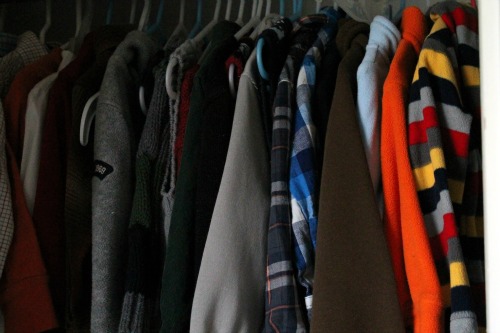Cheap clothes are costing you a fortune

Clothing stores are a shopaholic's paradise. Now, more than ever, you can get a lot more clothes for the money, especially during sales. Everyone loves a good deal (especially me), but those low prices come at a cost. Clothes are now so inexpensive because the manufacture of clothes has moved overseas. This has had a positive impact on our pocketbooks, personally, but a devastating effect on the economy. So, what's the appeal of cheap clothes? Why do we buy so many pieces that we often end up throwing clothes away or never wearing some at all?
More for less
Recently, I bought several pairs of pajamas for my son. Did he need them? No. But they were so cute! They were also marked down from about $10 a pair to $3 a pair, making them a total steal. Of course, I snagged several pairs - four, I think. It's mighty tempting, almost irresistible, to pass up getting a lot for a small amount of money. After I brought them home, though, I wasn't so in love. Because they were cheaply made, one pair shrank the first time they were put in the dryer. The other three were thin and not nearly as soft as some of his other pajamas. I got more things, yes, but the quality wasn't nearly as good as the more expensive brands.
The clothes look good
Some people argue that cheap clothes look cheap, but that simply isn't the case most of the time. Even magazines recreate celebrity looks with pieces from stores like Target, and they look just as good for hundreds of dollars cheaper. Cheap clothes aren't the drab, frumpy styles they used to be. They're trendy, bright and youthful. If you can get the same look for less, why pay more?
Keeping up with trends
Fashion trends change so fast you can get whiplash. No wonder most folks don't want to spend a lot of money on clothing these days. Styles fall out of fashion almost as soon as you buy them. Cheaper clothes make it possible to go shopping every few months (or more often for some reason) to replenish a wardrobe for the next season without breaking the bank.
The real costs
The Frugal Girl did a great review of the book "Over-Dressed: The Shockingly High Cost of Cheap Fashion." According to that book, until 1990, 50 percent of our clothing was made in the U.S. Today, that stands at a measly two percent. Companies have moved their operations overseas where the labor is cheap, and regulations are poor. Our cheap fashion is usually a result of people in less fortunate circumstances working for near slave-wages for long hours.
Have you ever been guilty of throwing away clothes that were perfectly functional? I don't mean those things that are torn beyond repair or stained. I mean pieces that were acceptable to wear, but you just didn't want to wear them. I've done it more times than I can count. It was the lazier thing to do since I could have at least taken them to a thrift shop, or better yet, donated them. Americans are wasteful, even with clothes. How wasteful? We throw away more than 12 million tons of textiles every year. Wrap your head around that.
Buy better, spend less and still look fashionable
Say you want to be fashionable and buy better quality clothes, but you don't want to spend a lot. Does that sound familiar? Although it may seem difficult, the answer is quite easy. Pay more for fewer pieces. With clothing, you truly do get what you pay for. Cheaper clothing tends to fade, shrink and fall apart much more quickly than more expensive brands. Take a look at this shoe, for example (cheap, Carter's brand, threads coming loose):

Rather than following along with every trend out there, buy classic pieces that can be mixed and matched for different looks. Use accessories to help you achieve trendier looks, but your wardrobe should be made of fashion staples that will be as fashionable two years from now as they are today. It's what people used to do, after all. Can you imagine your grandmother with closets brimming with so many clothes that she could never wear them all? That would seem wasteful to her generation.
If you want clothes that look fantastic, last longer and will be in style for longer than one season, you'll need to pony up the cash. In the end, you'll spend less and won't have to fear an avalanche of clothes falling on you every time you open your closet.
Have you ever made a cheap clothing purchase that you later regretted?
Photo courtesy of the author.
0 comments